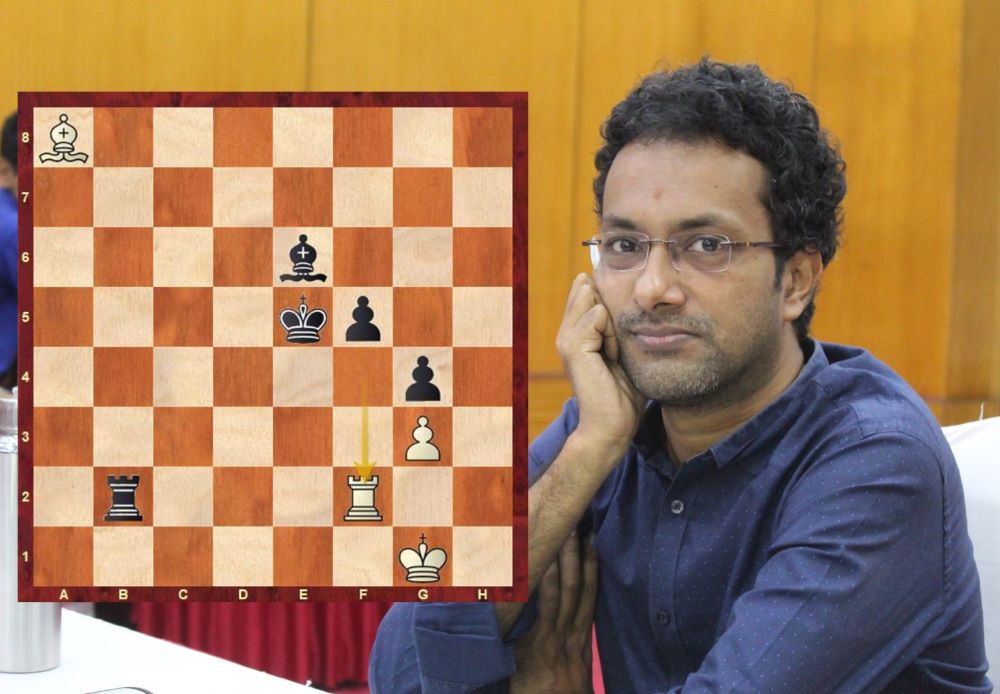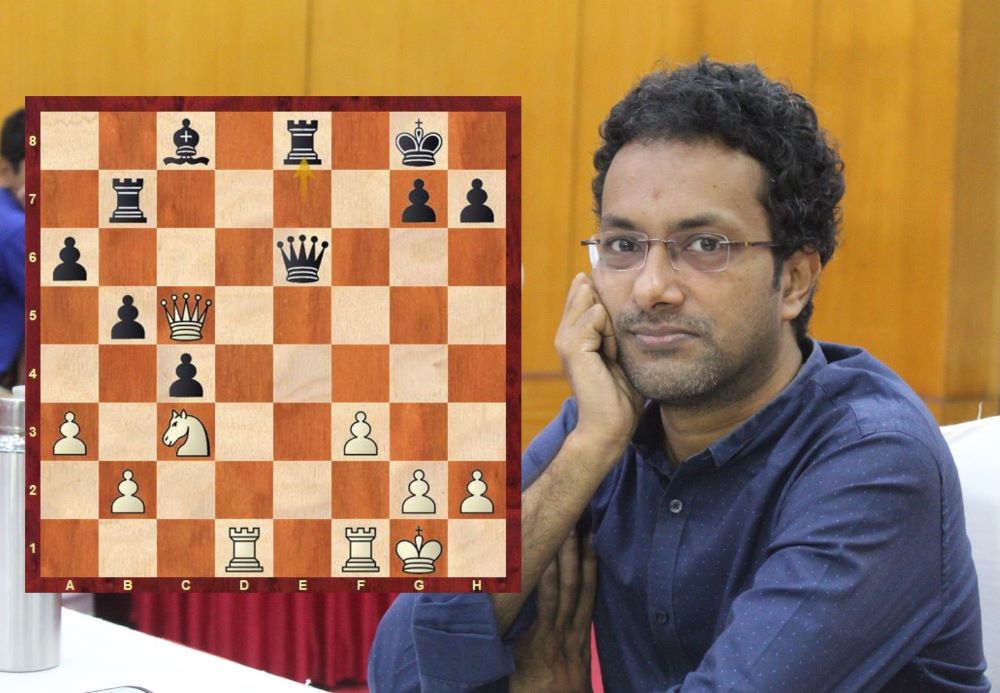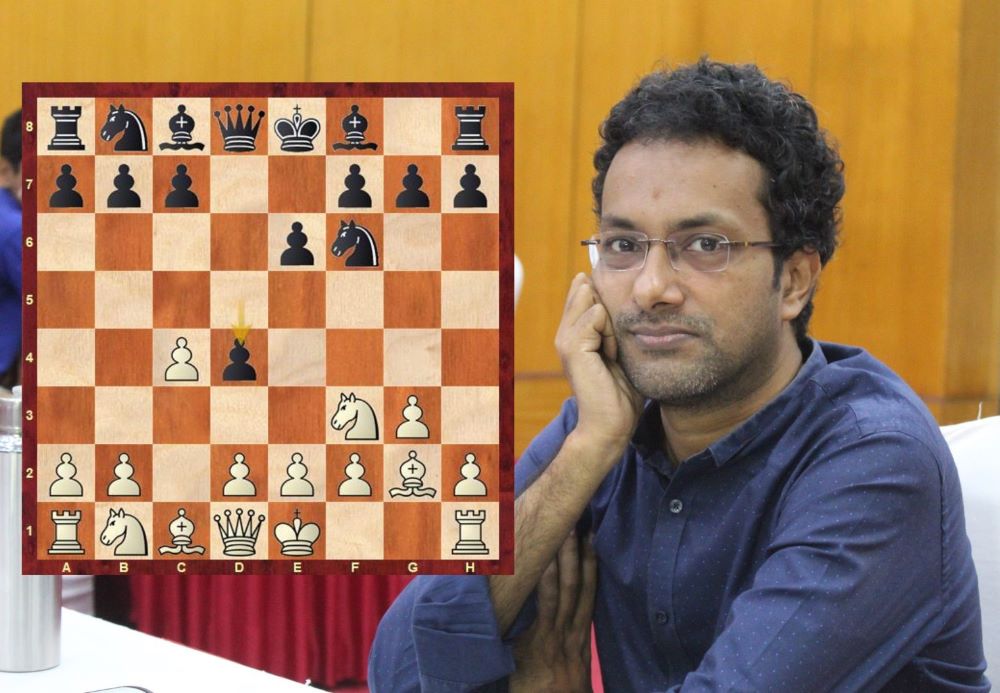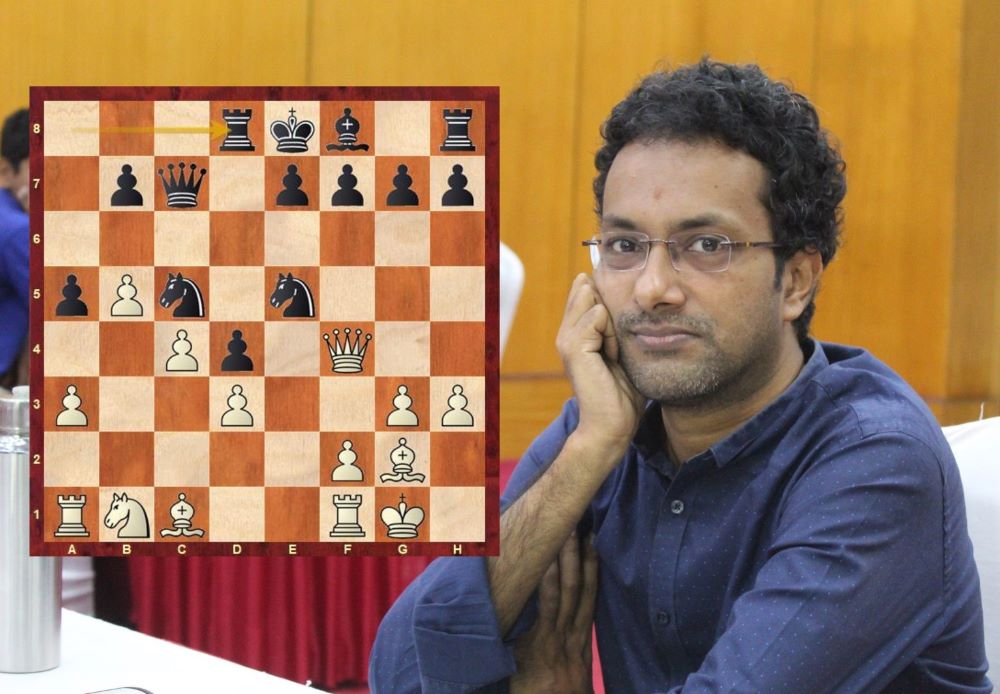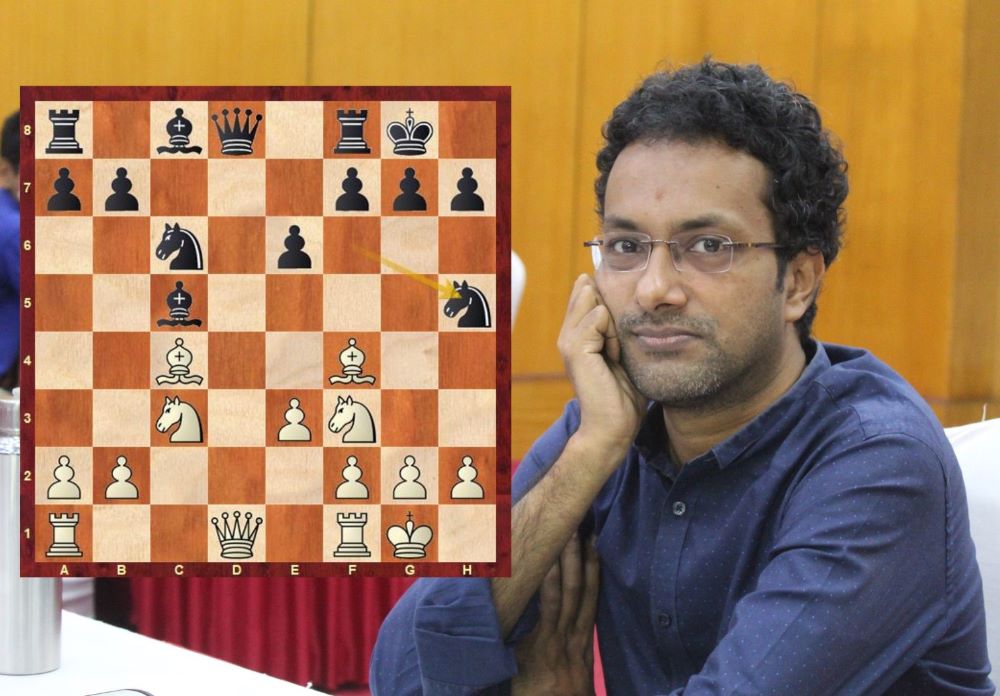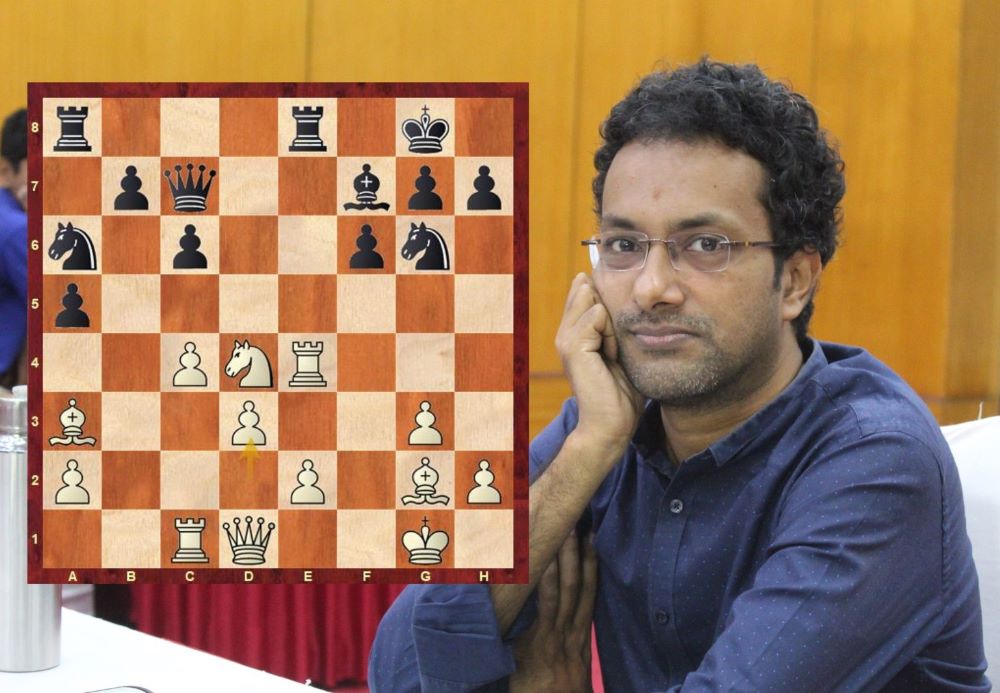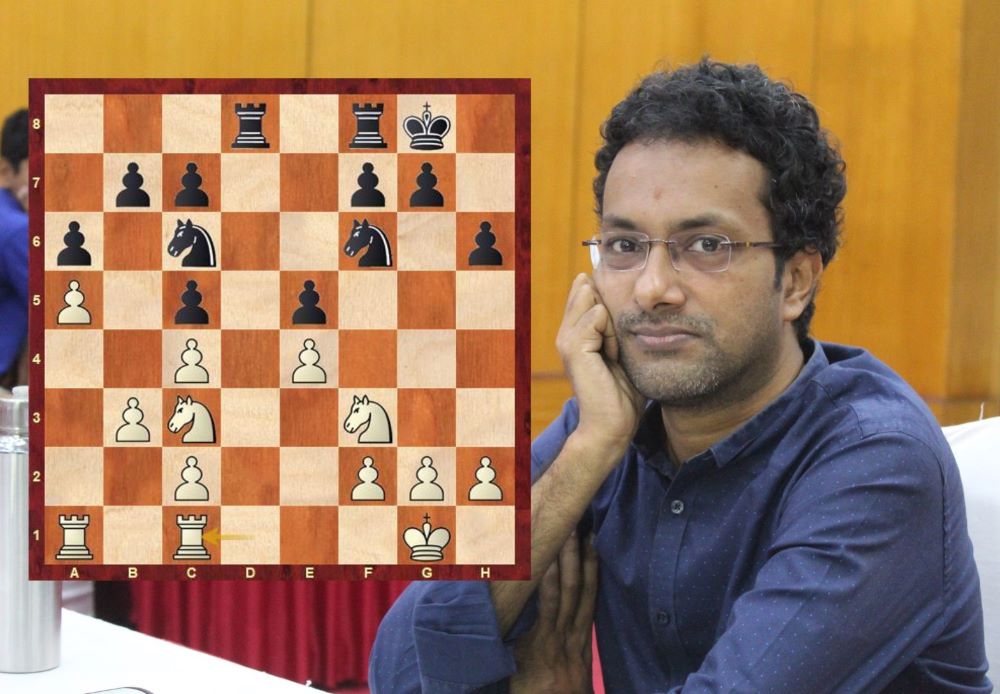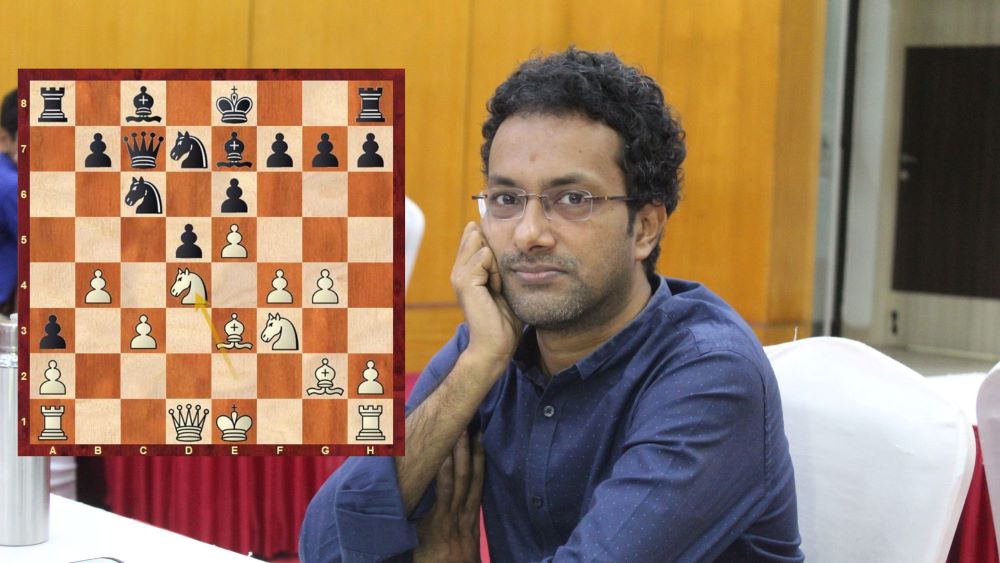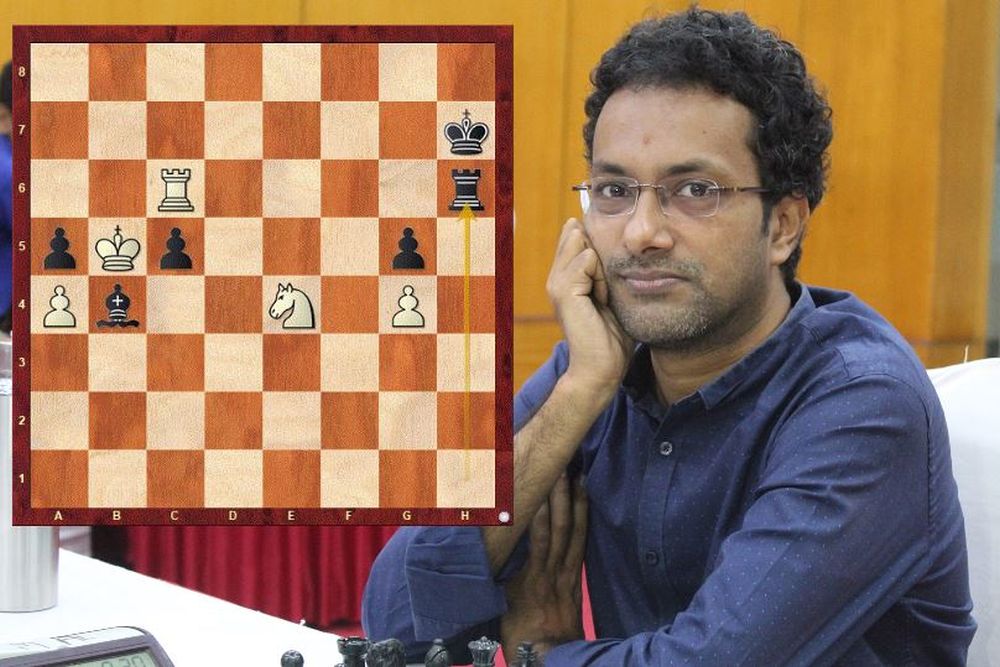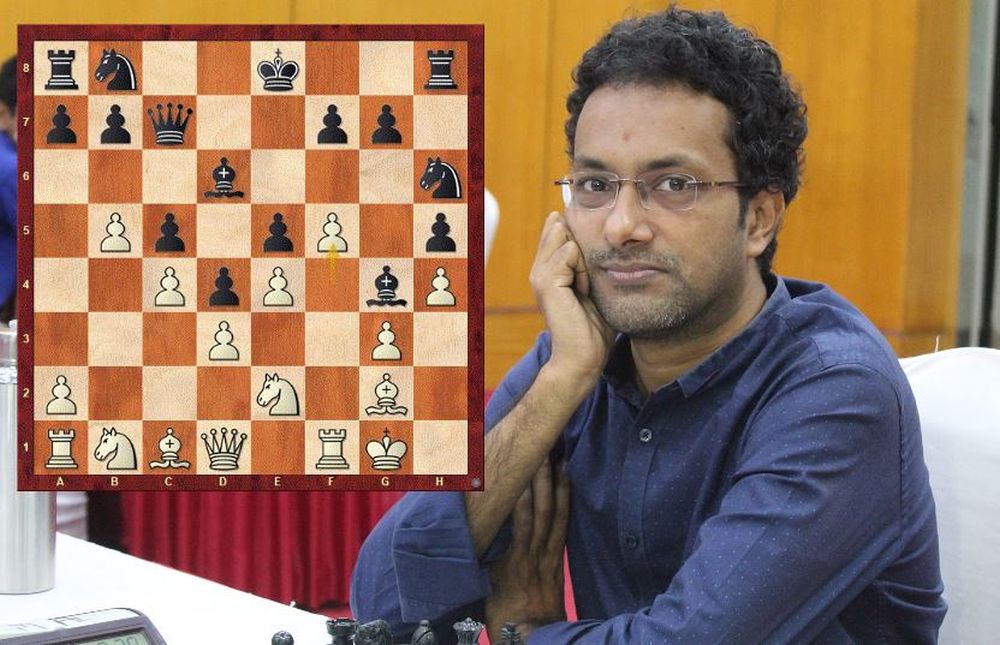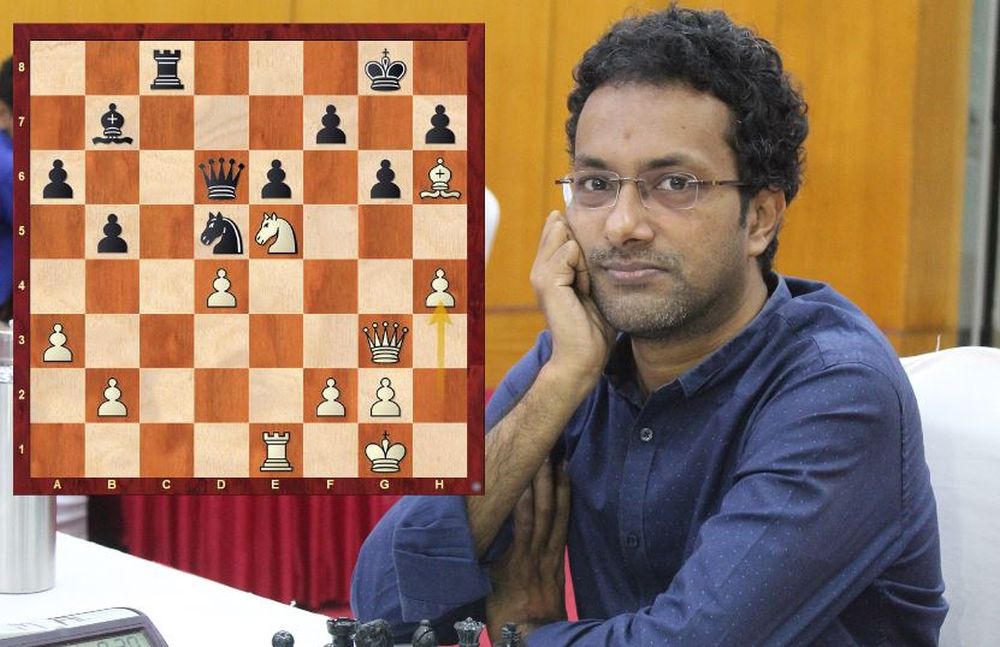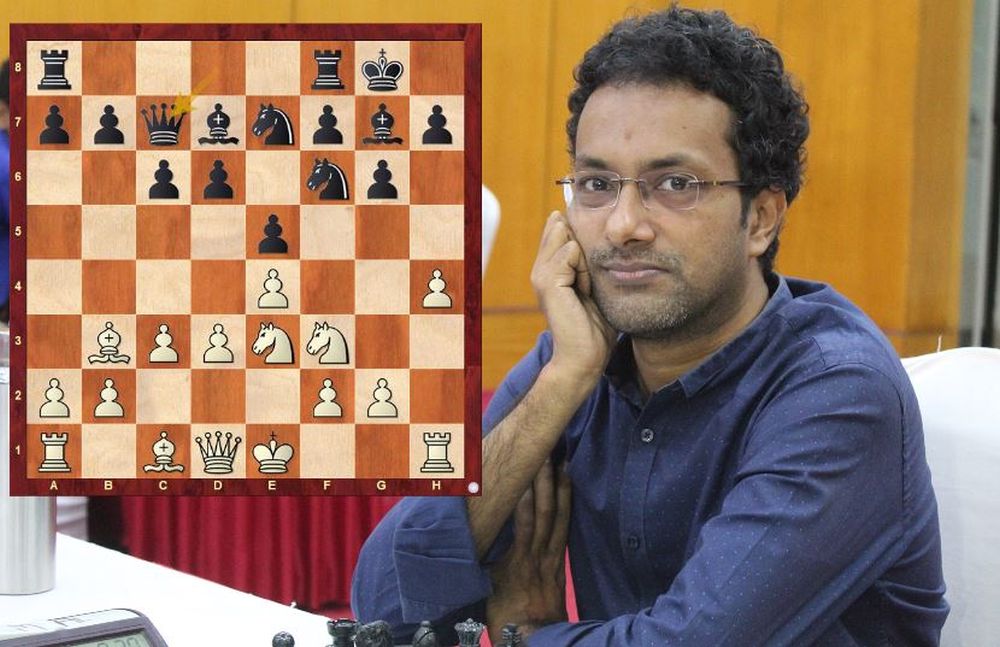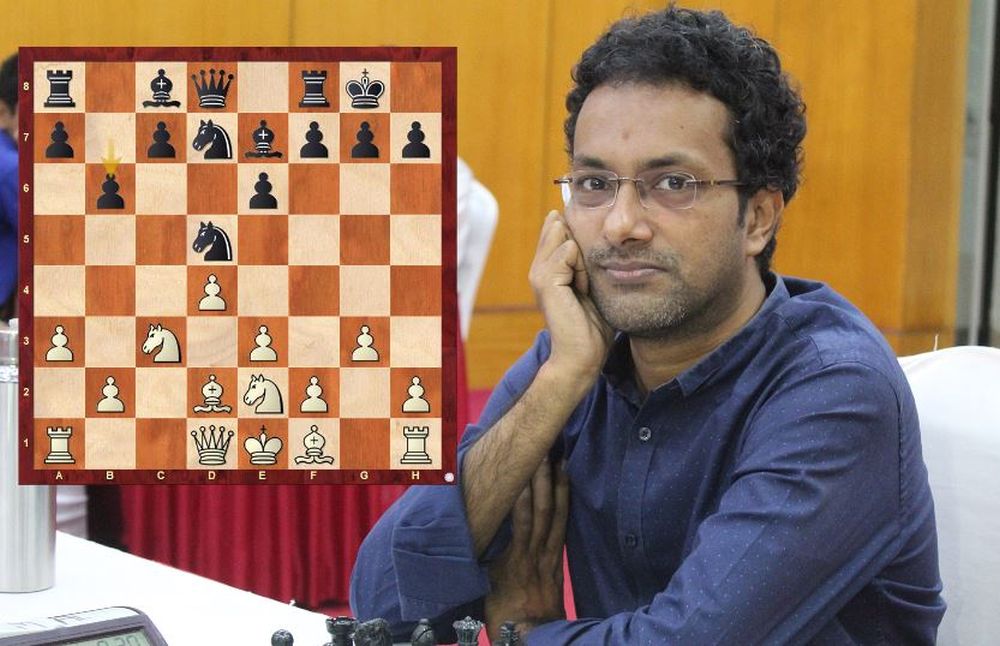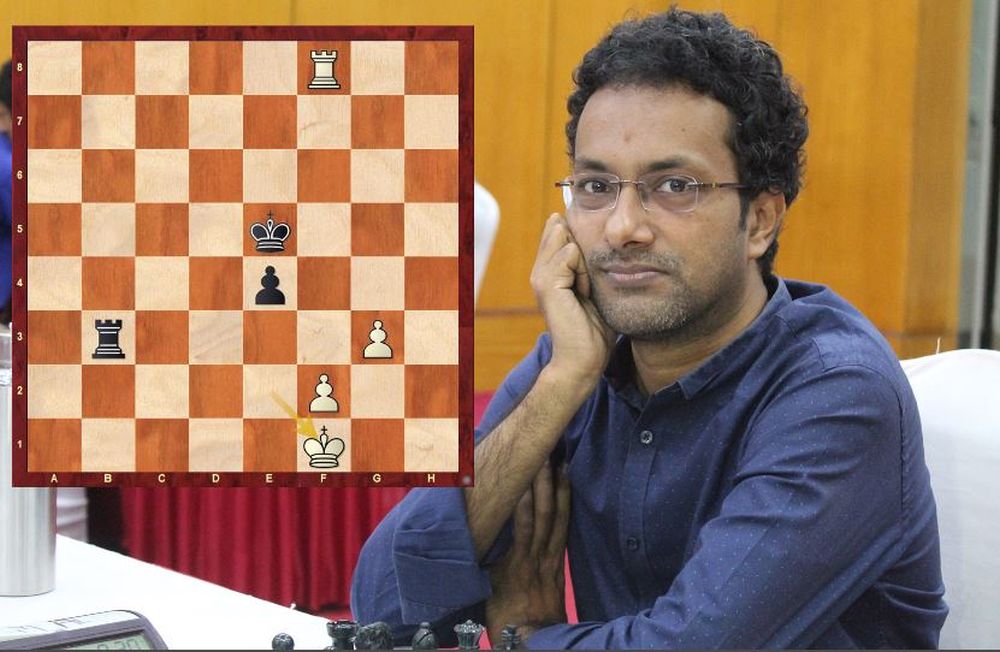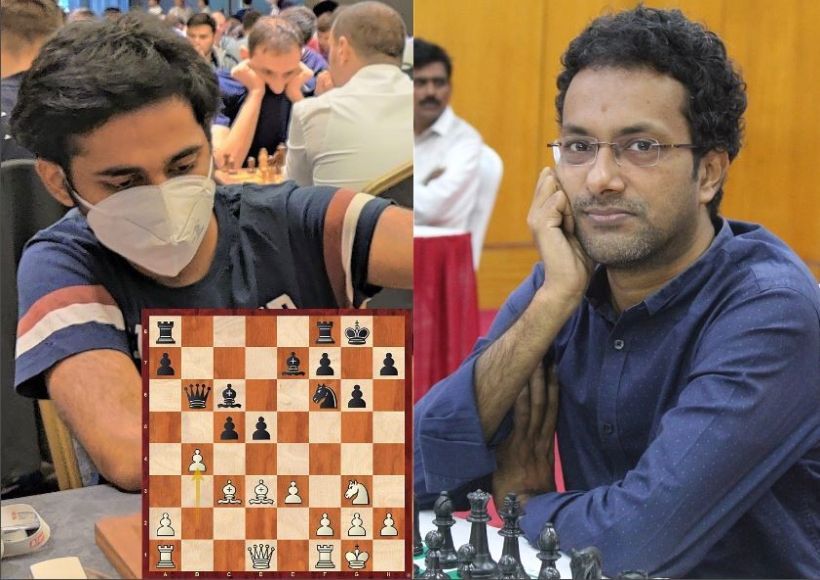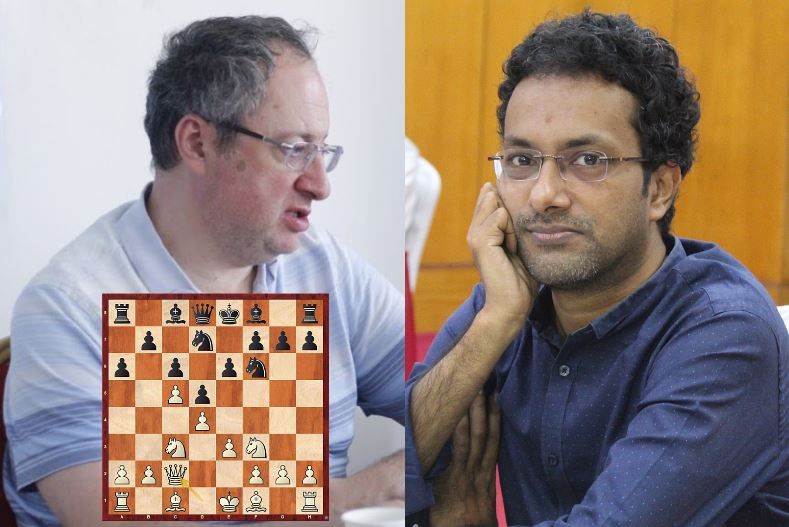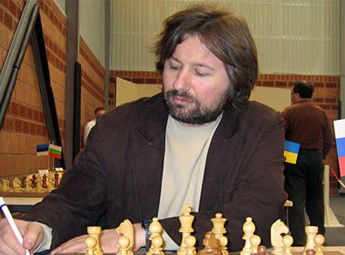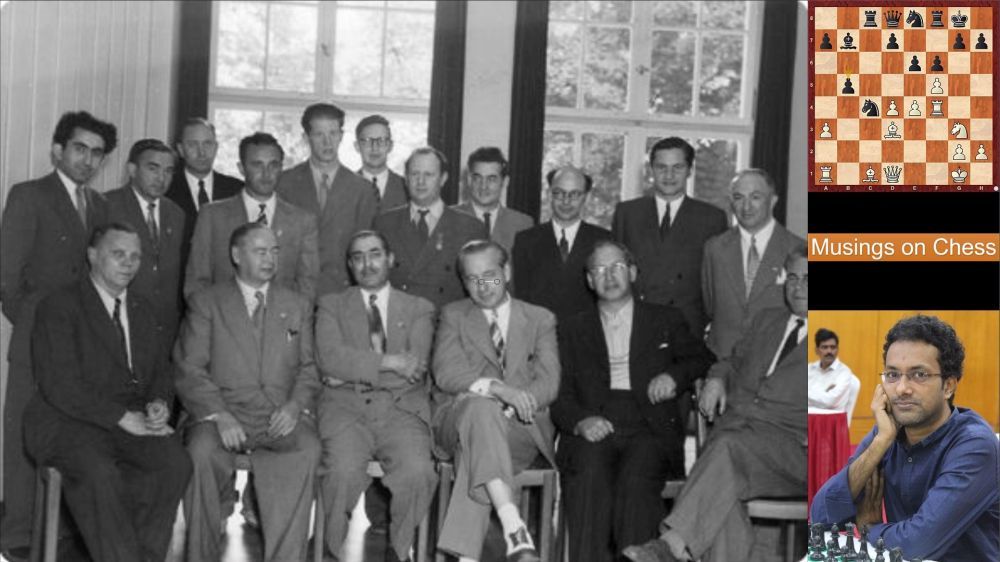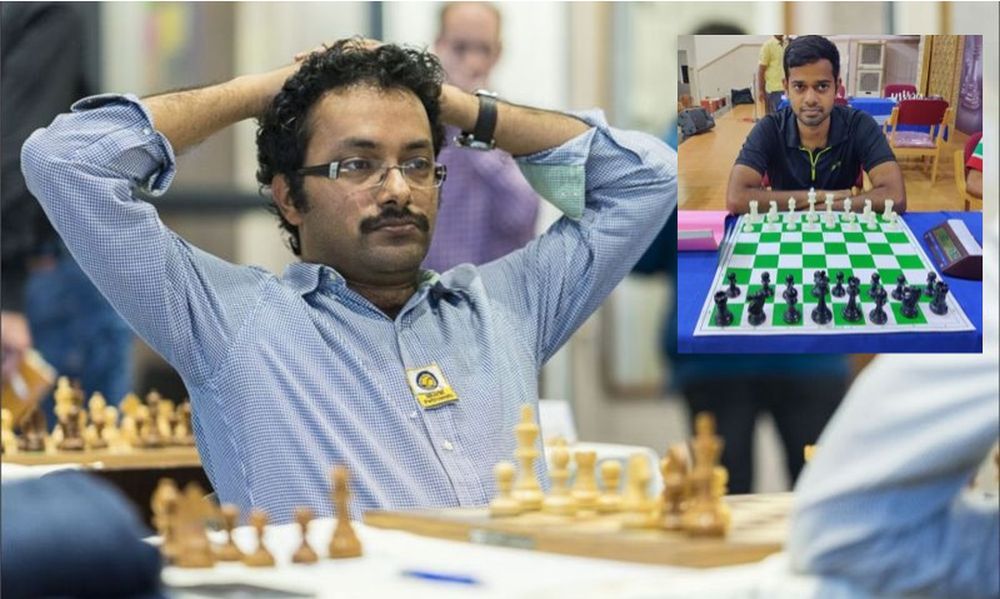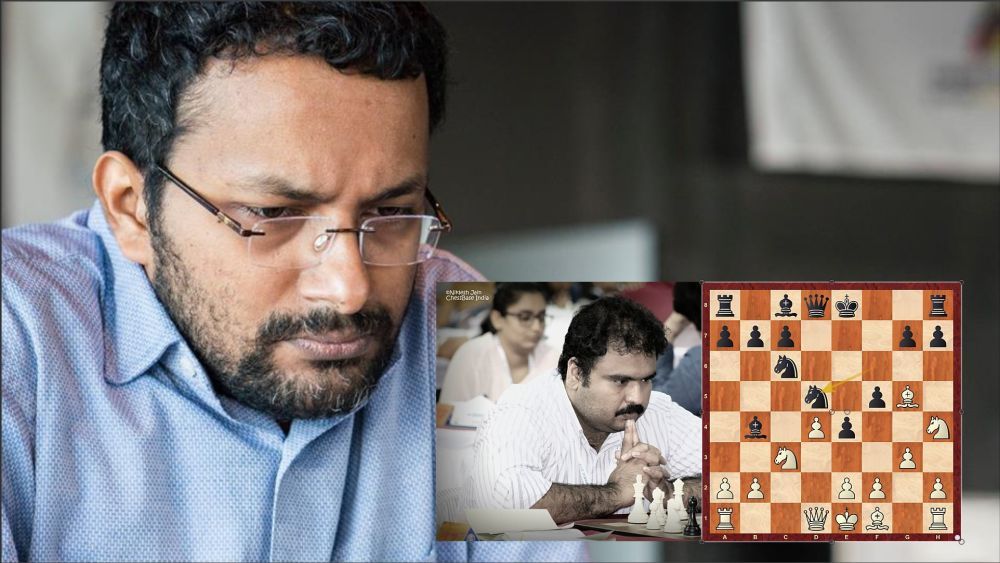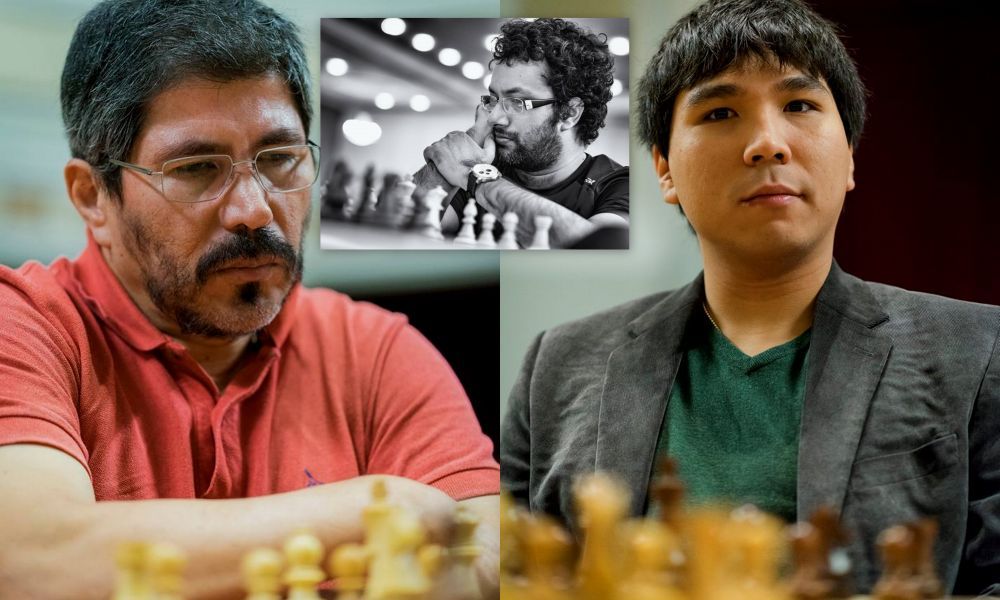Marathon Bishops on Boris Gelfand's birthday
A lot of pieces of various roles in different stages of the game. Bishop is often known as 'Sniper' for his long range. Have you heard of 'Marathon Bishops' ? What is this term - new or old? Knowing certain concepts will always help to understand various transitions, for e.g. middlegame to endgame. GM Sundararajan Kidambi explores the concept, which he found while going through GM Axel Smith's book on color complexes. Check out the detailed analysis by Kidambi written on the legend - GM Boris Gelfand's birthday and enrich your understanding in this new terminology. The concept is not new though. If you like his explanations, do mention in the comments, so that it inspires Kidambi to share more from his fountain of knowledge. Photo: Shahid Ahmed


"Never play a move without an idea even in blitz" -Tigran Petrosian
The above famous quote was told by the legendary Armenian World Champion in one of his training sessions to his then young protégé - Boris Gelfand who has religiously followed this advice throughout his rich chess career and quite successfully at that! Chess after all is a game where one out thinks an adversary, so the element of thought either by logic or intuition or inspiration remains a fundamental building block of a formidable chess player.
Recently I came across a very different term about describing a bishop, while browsing Axel Smith's book on color complexes. He described the bishop as a 'marathon bishop'!? As I understand, he describes a bishop which does have open diagonals (so, not a bad one in a traditional sense) but nevertheless lacking significant purpose or prospects in the context of the game in relation with the other pieces and pawn structure. He compared this with Marathon, where the athletes run such a great distance without any significant purpose!
While his logic found an in instant appeal in a lazy indoor person like me, I doubt if real athletes and people who love running will take it in the right spirit! Back to the concept, he discusses positions of the frequent imbalance bishop versus knight in that context. This makes much sense in the colour complex angle as well as the bishop by definition is limited to one colour of squares for its whole life as opposed to the slow moving, yet a piece which can control both colours of the board - the knight.
Although the terminology is certainly new, the concept definitely is not! In fact, I remember reading about a musing of Bronstein in the very first game of his masterpiece Zurich 1953, where he ponders, what if a bishop controls a certain diagonal, and if the opponent removes all the pieces placed on its way and the bishop is left to attack nothing? He later goes on to elaborate it in the context of weak colour complex where he defines a weakness of a certain colour of squares, say the dark squares would actually mean that the pieces of the opponent on the opposing colour complex (here the light squares) are the weakness, so the pieces utilizing the weakened colour complex, actually use it as a perch for attacking the opponent on the other complex of squares. This was quite deep and a genuine revelation when I came across these thoughts for the first time! However, in the given context his first half of the musing, where he says the bishop might be left without any prospects was a point I noted in my mind as well, without drawing any conclusions from it. Now I feel we can connect it to the marathon bishop context!
While looking at game of the birthday boy and one of my favourite players and friend Boris Gelfand, I thought it could be applicable in positions of opposite coloured bishops too. Let us jump in straight into the game to continue the discussion. We will join the game Cheparinov - Gelfand at FIDE Grand Prix 2009 after White's 14th move
Cheparinov - Gelfand, Jermuk 2009
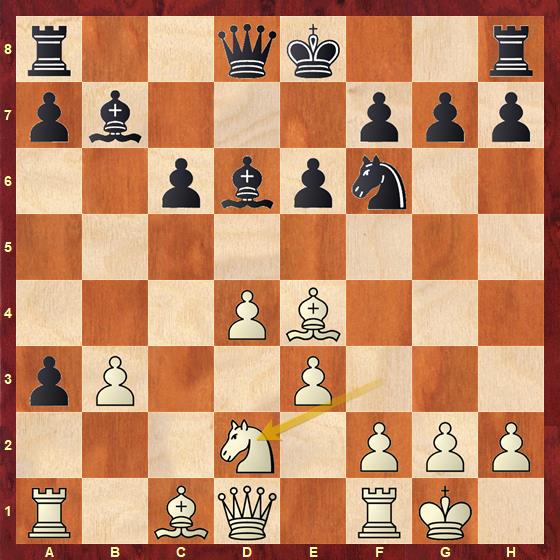
Black continued quite logically by capturing the offered pawn with the tactic
14...Nxe4 15.Nxe4 Bxh2+ 16.Kxh2 Qh4+ 17.Kg1 Qxe4 18.f3 Qg6

White has sacrificed his least significant 'h' pawn for control of dark squares and better control of centre and perhaps the better pieces as well, especially the bishops. The natural move here would be
19.Ba3 preventing Black from castling and Black usually replies to this by 19...h5! activating his rook from its initial square as was seen in the game Anand - Leko, Miksolic 2009.
Cheparinov came up with
19.Qd2!?
in this game which is a useful move with the intention of forcing Black to castle to meet the threatened Qb4 Ba3 ideas to play against the central position of Black's king.
19...Ba6!
Black uses the chance to improve his bishop from the passive position on b7 to a more active b5 from where it will not only defend the weakness on c6, but also control many more squares.
20.Rf2 0-0 21.Bxa3 Rfe8 22.Bd6 Bb5 23.e4 Rad8 24.Qf4 Rd7 25.Rd1 f6!?

Black slowly keeps improving the position little by little and step by step. After improving his bishop's scope, he has tried to place his major pieces on squares from where they can be active, and now hints at e6-e5 break at some point, using a tactical chance against the White's Bishop on d6 and he also wants to entice White to push his pawns forward and weaken some squares in the process.
26.e5?!
This is usually the easier way out from White's point of view. He cements the seemingly strong bishop on d6 and as of now, the weakening of the d5-square seems too insignificant. Are there any reasons to worry? One feature is that the bishop on d6 is permanently locked out from h2-b8 diagonal if the exf6 exchange does not happen. While this may not seem like a concern while the queens are on the board, this might be a big factor after the exchange of queens.
26...Red8 27.Rfd2

Here Black had at his disposal the possibility of 27...f5. Once White has played e5, potentially there is a possibility for Black to create a passed pawn on the kingside as he gets a three versus two standoff on the kingside. So, this potential advantage can be used to keep fighting for a win in a long game. However, it would be hard to push all the pawns in front of one's king with queens on the board. It would be much easier to do so once the queens leave the board. This would have surely been conceived as an idea by Boris. The question of how to execute this idea remains to be seen.
In the game he chose to play
27...Qg5!?
A wonderful psychological decision of trade. When one has the bishops of opposite colors and one is not averse to a draw, one would not avert a queen exchange, right? White, probably had no objective grounds for trying, so he would have mentally shifted to making a draw in this game. In such a situation, a queen exchange is usually welcome, but do all exchanges lead us close to a draw? Well... far from it!
28.Qxg5?
and White falls for the bait! After this, Black achieves what he wanted from the points discussed in the note to 27...f5. He has exchanged queens and has got doubled pawns away from the center, which here aid in creating a 'h' passer, Black's king also has a free path to move up the board on the kingside light squares.
The right approach for White was to play 28.exf6! Qxf4 29.Bxf4 gxf6. It is harder for Black to create a passed pawn on the kingside and another important point to note is that White's dark squared Bishop has a lot more role to play in defence in comparison with what happened in the game.
28...fxg5 29.Kf2 Kf7 30.Ke3 Kg6 31.Ra2 h5!
Black follows the plan of creating a remote passed pawn on the kingside with the help of his king. He is utilising all his resources very efficiently.

32.Rda1 a6 33.Bc5 Rf7 34.b4?!
White does not pay attention to weakening of squares. Now a potential route from Black's light squared bishop has been opened to d5 via c4 for Black's light squared bishop.
34...Ra8
To support the pawn on a6 and free the bishop to an even better square on d5 where it will help Black with creating and pushing the h-passer up the board. However, this was perhaps not required, and he could have directly gone for 34...h4! or 34...Bc4!? and White would have fallen short of getting any meaningful compensation if he decided to sacrifice the exchange with 35.Rxa6
35.Rc1 h4 36.Rh1?!
White is absolutely lost after this natural move, which tries to stop Black from getting his 'h' passed pawn.
Objectively better was the counter intuitive 36.g4! hxg3 37.Rg1 Rh8 38.Rxg3 Bc4. But even here White is still having a long defence ahead, although the position is not yet directly lost yet like in the game.
36...Bc4 -+ 37.Ra3 Bd5 38.Ke2 Rf4 39.Rh3 g4

A look at the position is enough to see the progress that Black has made and the difference in the strength of the bishops. The bishop on c5 is really a marathon one, isn't it, serving no purpose in attack or defence!
40.fxg4 Bc4+ 41.Ke3 Rxg4 42.Kf2 Kh5 43.g3 g5 44.Rh1 Rg8 45.Rc1 0-1
A very interesting game in the above theme, and not only that, but lot of stratagems were also hidden in it.
I take this opportunity to wish Boris a very happy 56th birthday and perhaps savour one of his fine moments from a great year in his chess career when he won the World Cup and started his path on becoming a World Championship challenger.

About the author
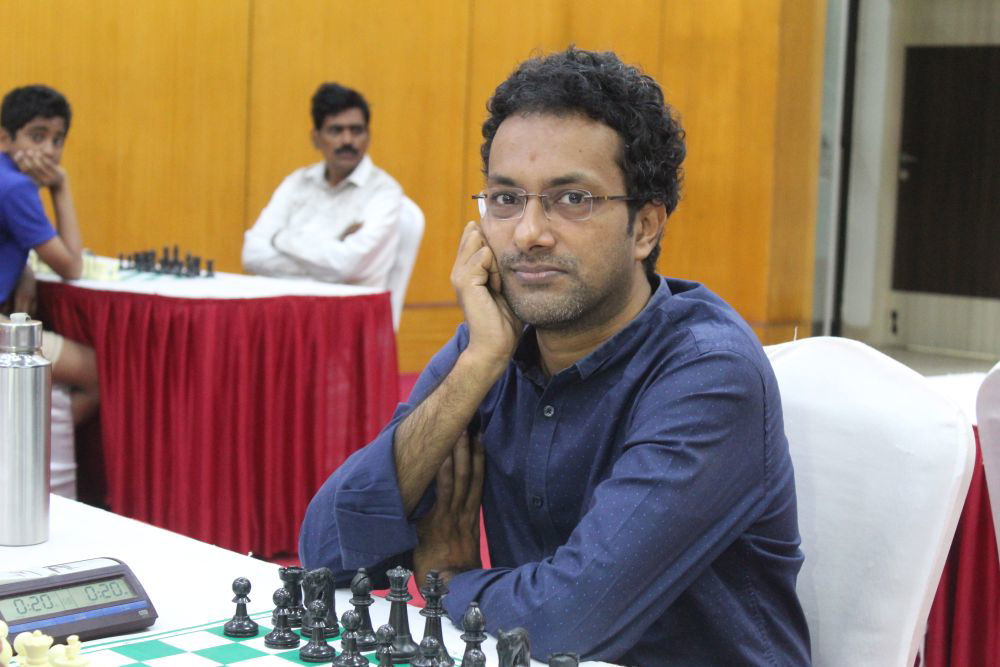
ChessBase India is happy to see GM Sundararajan Kidambi writing his first post of the year 2024 in his blog "Musings on Chess". Knowing what an encyclopedic knowledge the grandmaster from Chennai possesses, I think we are in for a treat! One can only hope that Kidambi continues writing regularly! We will keep reminding him about it! We are awaiting to read his next post of the year and be enriched.
Links
The article was edited by Shahid Ahmed



